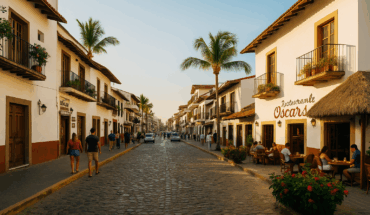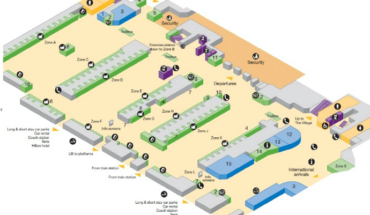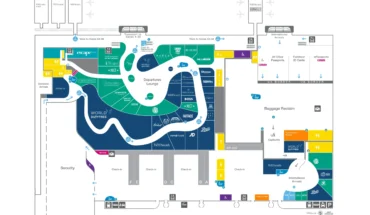Uzbekistan’s traditional clothing narrates a story that spans over 2,000 years of rich cultural heritage and artistic rise. These vibrant garments showcase deep symbolic significance woven into every thread and embroidery pattern.
Skilled artisans turned Uzbekistan into a textile powerhouse during the Middle Ages. They crafted exquisite gold brocade, striped cotton fabrics, and silk garments. Traditional Uzbek clothing features distinctive elements for both men and women. Men typically wear the chapan (quilted robe) tied with a kerchief. Women’s traditional attire often includes plain khan-atlas tunic-dresses paired with wide trousers. Urban areas now reserve these traditional outfits for festivities and holidays rather than everyday wear.
The sort of thing I love about Uzbek traditional dress ranges from its ancient Silk Road roots to unique regional variations. This piece delves into the cultural significance behind the patterns, colors, and styles that have made Uzbekistan’s traditional clothing a proud symbol of the country’s enduring heritage.
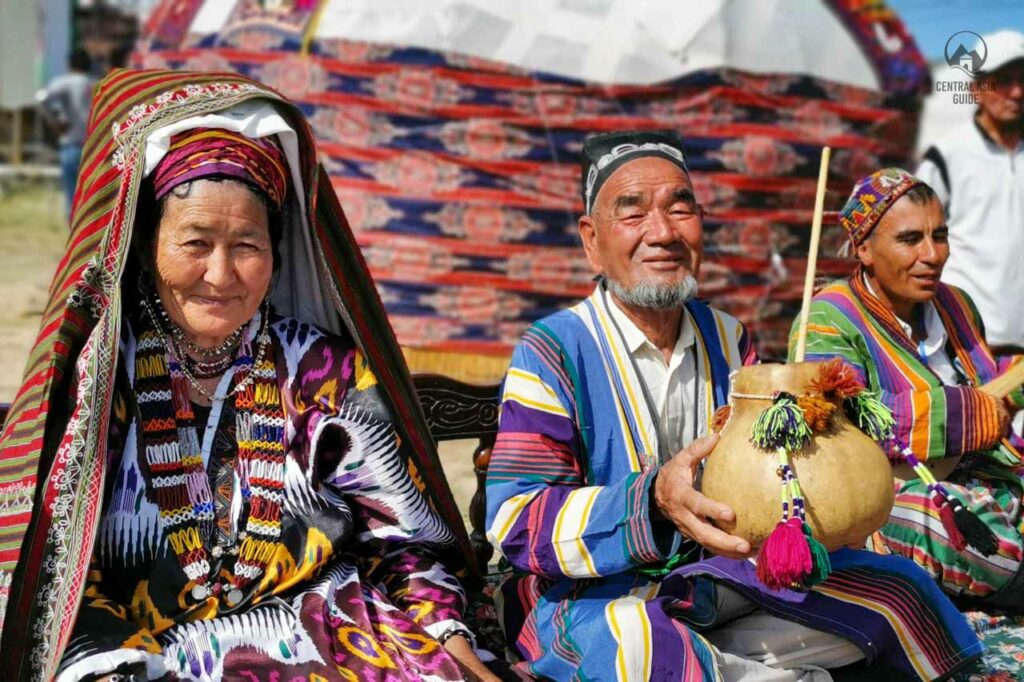
The Roots of Uzbek Traditional Clothing
The living legacy of textile traditions still thrives in Uzbekistan’s ancient cities, a heritage that spans more than two millennia. The country’s traditional clothing, with its vibrant fabrics and intricate designs, represents centuries of trade, conquest, and cultural exchange.
Silk Road influences and ancient trade
Uzbekistan has been the meeting point of civilizations for over 2,000 years. Its fashion reflects continuous cultural exchange along the legendary Silk Road. Samarkand and Bukhara grew beyond simple trading posts into textile powerhouses where East and West shared ideas and techniques freely.
Rich textile heritage comes alive through archeological findings. Ancient frescoes, terracotta figurines, and miniature paintings help preserve our knowledge of Uzbekistan’s traditional clothing. Historical records show wealthy citizens wore luxurious silk kaftans, while working-class people opted for simpler cotton garments.
Silk production shaped the region’s identity. Uzbekistan became the world’s third-largest silk producer after China and India, producing about 5% of global output. The Fergana Valley today feels like a window into silk’s golden age, with its mulberry-lined roads and workshops that continue age-old techniques.
Early textile craftsmanship and materials
Weaving in Uzbekistan reached remarkable sophistication two millennia ago. The Fergana Valley’s excavations revealed amazing textile pieces, including long silk dresses with detailed stitching and decorative slits that women paired with waistbands or scarves.
Uzbekistan’s reputation for textile excellence peaked during the Middle Ages. Skilled artisans created distinctive gold brocade, striped cotton fabrics, and silk garments that showcased exceptional craftsmanship. Bukhara, Margilan, Namangan, and Kokand earned fame for their decorative weaving crafts.
Traditional fabric creation demands intense labor even today. Ikat production involves 37 steps and requires 10-12 master craftspeople working as a team. The abrband technique (Persian for “tying a cloud”) creates stunning patterns by resist-dyeing threads before weaving.
Cultural exchanges shaping fashion
Cultural waves transformed Uzbekistan’s clothing traditions. The fourteenth century Mongol arrival brought Chinese influences, including elaborate feathered headdresses. The Timurid dynasty ushered in new fashion trends – both men and women started wearing double-layered garments with shorter outer sleeves to display underlying colors.
Religion significantly influenced traditional attire. Islamic practices shaped modest dress codes and esthetic choices. Yet Uzbek clothing retained unique regional characteristics across different territories.
Highly localized styles emerged during the 17th and 18th centuries that remain distinctive today. Each region developed its signature look – from the Fergana Valley’s modest silk designs to Bukhara’s urban sophistication. The basic forms and cuts stayed remarkably consistent until the 20th century, despite regional variations.
Today’s traditional Uzbek garments tell a rich story of cultural progress. Every stitch and pattern reflects generations of adaptation, innovation, and artistic mastery.
Uzbekistan Men’s Traditional Clothing
Uzbekistan men’s traditional clothing shows centuries of masterful craftsmanship and practical design at its finest. These garments blend function with artistic expression that continues to engage visitors today – from detailed ceremonial wear to everyday basics.
Chapan: the iconic robe
The chapan stands as the life-blood of traditional Uzbek clothing for men. This quilted robe has become a symbol of Uzbek identity. The knee-length or longer coat shows a simple yet clever design. It’s loose-fitting and straight-cut without buttons or collar. Two small straps at chest level hold the overlapping front panels together to shield against harsh weather.
The chapan’s versatility makes it special. Skilled craftsmen make both light summer versions and heavily quilted winter variants. They pad these winter versions with cotton, wool, or sometimes even camel hair. The design has vertical cuts on both sides of the hem – a practical touch that helps with horseback riding.
Each region’s chapan design tells its own cultural story:
- Bukhara: Rich gold and silver embroidery shows wealth and status
- Fergana Valley: Bright floral patterns and premium silk stand out
- Samarkand: Bold, colorful designs reflect the city’s vibrant culture
The chapan’s price range is huge – from basic designs at $20-30 to rare collector’s pieces worth up to $12,000.
Kuylak and ishton: everyday essentials
Men wear a kuylak under their chapan – a straight-cut cotton undershirt. These shirts came from homespun cotton with minimal decoration except for a small decorative braid called jiyak along the collar. Men in the Fergana Valley and Tashkent region liked the yakhtak – a unique wrap-style shirt variant.
The ishton pairs with the kuylak – wide trousers that narrow at the ankles. This smart design mixes comfort with function. Men could easily tuck these cotton trousers into soft leather boots. The material worked well in Uzbekistan’s changing climate.
Belts, boots, and layering traditions
Everything in Uzbek men’s traditional dress revolves around smart layering and accessories. Men tie their chapans with bright sashes or kerchiefs called belbog or kiyikcha. These waist wraps keep clothes in place and add style.
Special events called for fancy velvet belts with detailed embroidery. Some had silver metal plates and buckles. Daily wear needed simpler long scarf-like sashes.
Men wore high boots made from thin, soft leather with pointed toes. These boots finished the outfit perfectly while protecting feet during walking and riding.
The sort of thing I love is how men would layer multiple chapans at once as a status symbol. They wore two or more coats together, even in summer, to show their wealth and family success. More layers meant higher social status.
Traditional Uzbek clothing still plays a key role in cultural celebrations across the country. Modern designers keep creating new versions of these timeless garments for today’s generation.
Uzbekistan Traditional Clothing for Women
The vibrant world of Uzbekistan traditional clothing women wear goes way beyond bustling bazaars and ancient cities. These garments tell stories through their patterns and colors that have fascinated visitors across centuries.
Khan-atlas tunics and wide trousers
A woman’s uzbek traditional dress starts with a simple tunic-like dress made from khan-atlas paired with flowing trousers. This combination brings together comfort and modesty while showing off remarkable craftsmanship. The koylek (dress) flows down to the ankles with long sleeves, crafted from silk, adras (a traditional Uzbek fabric), or velvet.
Women pick simple koyleks with basic designs for their daily activities. Special occasions call for stunning artistic pieces made from satin and decorated with golden thread embroidery. The salwar – wide cotton trousers that taper at the ankles – sits underneath these dresses.
The abaya adds another layer of elegance to the outfit. This long-sleeved robe started as a practical piece, but today’s versions showcase beautiful adras fabric with embroidery, stones, and delicate lace details.
Headdress: skullcap, kerchief, and turban
Uzbekistan’s women’s headdress has three elements that work together beautifully: a base skullcap, a kerchief over it, and a turban on top. This elegant arrangement shows marital status and regional identity while serving practical needs.
Small velvet caps grace young girls’ heads, while married women wear more elaborate arrangements with larger shawls in white or light colors. Each region’s unique identity shines through distinctive embroidery patterns on these headdresses, showing rhombuses, geometric ram horn symbols, rectangles, and circles.
Jewelry as status and protection
Gold and silver jewelry plays a vital role in traditional uzbekistan clothing for women across generations. These pieces served as portable wealth and family heirlooms. A complete set brings together earrings, bracelets, and intricate necklaces that show the wearer’s social position.
These jewelry pieces also work as protective talismans. The designs feature symbolic elements that people believe ward off evil spirits and bring luck. Women wear their finest pieces during special events, creating a dazzling display of metals against colorful fabrics.
Color symbolism and embroidery meanings
Uzbek traditional clothing’s colors and patterns carry deep meaning. To cite an instance, see how:
- Red symbolizes life, love, and vitality, protecting women’s reproductive functions
- White represents purity, integrity, and makes perfect bridal wear
- Green connects with nature and Islamic traditions
- Blue symbolizes the sky, universe, and guards against the evil eye
The embroidery tells its own story. Almond patterns represent longevity and eternity, while pomegranate designs show wealth and abundance. Surkhandarya’s women love red as it symbolizes well-being. Blue and violet in a woman’s dress point to her husband’s high social status.
These garments stand as complex cultural expressions where every thread, color, and pattern weaves centuries of tradition into beautiful stories.
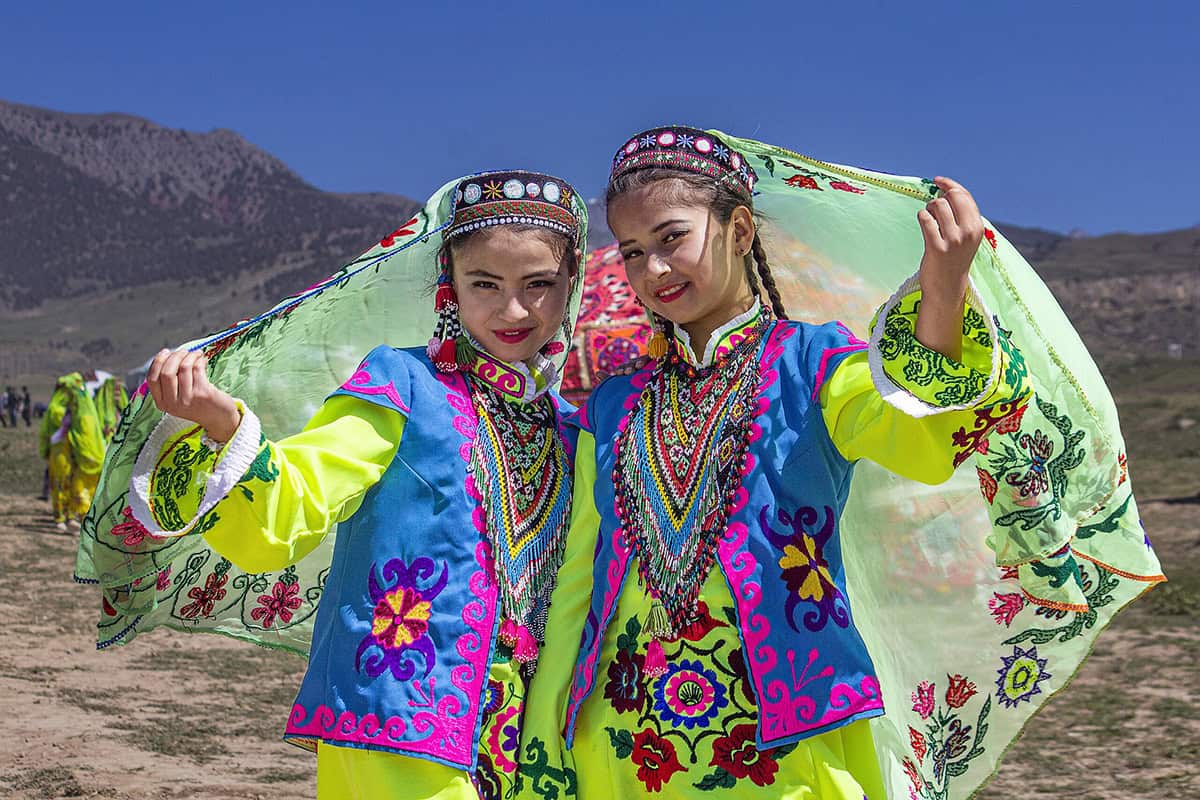
The Significance of Headwear in Uzbek Culture
Uzbekistan’s traditional clothing has many treasures, but its distinctive headwear stands out as a symbol of cultural identity. These pieces are more than fashion statements – they’re works of art that tell stories about age, status, and regional identity.
Doppi and tubeteika: origins and styles
The skullcap is a key part of traditional uzbek clothing. People call it doppi in Uzbek and tubeteika in Russian (from Tatar “tubetei” meaning “top” or “elevation”). These caps serve as cultural markers that men, women, and children wear in every part of Uzbekistan.
The caps come in many shapes based on local traditions – round, square, conical, or tetrahedral. Their practical design lets people fold them easily for carrying, which makes them perfect for daily use. These headpieces also work as religious and ethnic identifiers that people wear throughout Central Asia.
Regional embroidery patterns
Each of Uzbekistan’s six historical regions has its own unique headwear style. This creates a visual language that locals understand instantly. The Chust skullcap from Fergana Valley is one of the most famous, with its black fabric and white embroidery showing four stylized “pepper” patterns surrounded by sixteen small arches.
The symbolism runs deep in every element. The four sides protect from evil spirits coming from cardinal directions, and the black fabric represents space and darkness. The white thread patterns show the sun’s movement, while sixteen arches symbolize life’s cycles and promise wealth and good fortune.
Bukhara’s gold-embroidered doppi shows amazing craftsmanship with patterns that reflect high social status. The designs often feature “the nightingale’s eye,” “the sparrow’s tongue,” domes, and stars as popular motifs.
Headdress as identity and heritage
Headwear has always marked identity throughout Uzbekistan’s history. The tubeteika became a symbol of national pride during Soviet times, when authorities pushed it as a modern option to replace women’s traditional veils. Artisans started working in cooperatives where outside influences shaped quality and patterns, bringing new styles and synthetic colors.
The doppi still shapes Uzbekistan’s national identity and remains crucial for weddings, festivals, and religious celebrations. This tradition lives on because these headdresses do more than decorate – they hold cultural memories where every stitch tells a story of Uzbekistan’s heritage.
Regional Styles Across Uzbekistan
Traditional Uzbek clothing tells unique cultural stories through its fabrics and designs. Each region of Uzbekistan showcases its distinct style and heritage.
Fergana Valley: modesty and silk
The Fergana Valley’s clothing style embraces Islamic modesty with subtle designs on colored backgrounds. Local embroidery showcases delicate graphic patterns of twigs and concentric rings that leave much of the background visible. The women here prefer elegant veils and choose subdued blues or greens with simpler patterns compared to other areas.
Samarkand and Bukhara: urban elegance
Samarkand’s textile trade reached Syria, Egypt, and Byzantium, and its raspberry-colored velvets were highly prized. The city’s women adhered to specific color codes – young girls wore red, married women chose blue, older women preferred pale blue, and elderly women dressed in white. Bukhara’s distinctive embroidery features flowers on thin branches that spread evenly across fabrics, along with round rosettes framed by extended stems.
Khorezm and Surkhandarya: tribal and nomadic styles
Surkhandarya maintains its ancient traditions more strongly than other regions. The nomadic women’s attire included elaborate cylindrical hats with tribal emblems, often adorned with 25-30 vibrant shawls. Their embroidery showcases realistic plant designs including tulips, bouquets, and palmettes.
Kashkadarya: symbolic embroidery and layering
The women of Kashkadarya wear tuniclike, long dresses with wide sleeves. They often layer 3-4 dresses at once to show their social standing. Their embroidery blends local influences with Samarkand and Surkhandarya styles, featuring rosette patterns and floral motifs such as doiragul and archagul.
Suming all up
Uzbekistan’s traditional clothing has evolved beyond practical garments into wearable cultural archives over the centuries. These extraordinary textiles reflect more than fashion—they capture the soul of Uzbek identity, heritage, and artistic excellence.
The iconic chapan stands at the heart of Uzbekistan’s men’s traditional clothing and shows amazing versatility in different regions. A single chapan tells different regional stories through its design, from Bukhara’s golden embroidery to Fergana’s vibrant floral patterns. Women’s traditional attire displays exceptional craftsmanship through khan-atlas tunics paired with wide trousers. The layers of clothing often reveal the wearer’s social standing.
Headwear reveals the most about Uzbek traditional dress. Doppi and tubeteika skullcaps work as geographic and social markers. The specific embroidery patterns on these caps instantly show the wearer’s home region and status. Each piece of jewelry serves as both decoration and protection, with meaning that goes beyond just looking beautiful.
The richness of regional variations adds to this mixture of textiles. The Fergana Valley features modest designs with subtle patterns. Bukhara and Samarkand showcase urban elegance through intricate embroidery. Khorezm and Surkhandarya keep their nomadic influences alive. Kashkadarya shows status through clever layering.
Visitors to Uzbekistan should take the chance to see these living traditions in person. Local textile workshops still use ancient techniques to create fabrics that connect past and present. Many tourists love exploring local markets where traditional clothing pieces become meaningful souvenirs that tell stories of this amazing cultural heritage.
Uzbekistan’s traditional clothing means way more than just something to wear—it’s a visual language. Every thread, color, and pattern shares stories of cultural exchange, social hierarchy, religious belief, and regional identity. Modern fashion has taken over everyday wear, but these traditional garments still shine during celebrations and ceremonies. This rich textile heritage continues to thrive and connects new generations to their ancestral roots.
Here are some FAQs about Uzbekistan traditional clothing:
What is the traditional clothing in Uzbekistan?
Uzbekistan traditional clothing features colorful, embroidered garments that reflect the country’s rich cultural heritage. Traditional uzbekistan clothing for both men and women includes loose-fitting designs suitable for the Central Asian climate. Many uzbekistan traditional clothing images showcase vibrant patterns and intricate needlework that make these outfits visually distinctive.
What is the traditional dress of Uzbekistan men?
Uzbekistan men’s traditional clothing typically consists of a long robe called a chapan worn over a tunic and wide-legged trousers. The uzbekistan traditional clothing men’s style often includes a skullcap or turban as headwear, with the chapan being the most recognizable element. These traditional uzbekistan clothing items for men are usually made from striped cotton or silk fabrics in rich colors.
What should female tourists wear in Uzbekistan?
Female tourists should consider modest clothing that respects local customs, similar to uzbekistan traditional clothing women styles. While not required to wear traditional uzbekistan clothing, women visitors often choose loose-fitting dresses or pants that cover shoulders and knees. Uzbekistan traditional clothing images can provide inspiration for culturally appropriate yet comfortable travel outfits.
What is the name of the Uzbek robe?
The traditional Uzbek robe is called a chapan, which is central to uzbekistan traditional clothing for both genders. This robe appears frequently in uzbekistan traditional clothing images, characterized by its long length and striped patterns. The chapan remains an iconic element of traditional uzbekistan clothing men and women wear for special occasions.
What is traditional clothing called?
Traditional clothing in Uzbekistan is generally referred to as national costume or milliy kiyim in Uzbek. When viewing uzbekistan traditional clothing images, you’ll notice these outfits vary by region but share common elements. Both uzbekistan traditional clothing women and men’s styles fall under this broad category of cultural dress.
Is a kanzu a dress?
No, a kanzu is not part of uzbekistan traditional clothing – it’s a white robe worn in East African cultures. Traditional uzbekistan clothing for men features the chapan robe instead, which differs significantly in style and fabric. Uzbekistan traditional clothing images clearly show these cultural distinctions in traditional garments.
Can men wear shorts in Uzbekistan?
While not forbidden, men wearing shorts may stand out as it differs from uzbekistan men’s traditional clothing norms. Traditional uzbekistan clothing men’s styles favor long pants, so visitors might feel more comfortable following this convention. In cities, shorts are more accepted than in rural areas where traditional uzbekistan clothing remains prevalent.
What is the traditional dress of male and female?
The traditional dress for males in uzbekistan traditional clothing men’s style includes the chapan robe and skullcap, while females wear colorful dresses with intricate embroidery. Uzbekistan traditional clothing women’s outfits often feature a tunic dress called a kuylak paired with trousers. Both genders in traditional uzbekistan clothing wear bright colors and patterns that appear in many uzbekistan traditional clothing images.
What religion is in Uzbekistan?
Islam is the predominant religion in Uzbekistan, which influences some aspects of traditional uzbekistan clothing styles. The uzbekistan traditional clothing women’s designs often reflect modest Islamic dress principles while maintaining vibrant local aesthetics. Uzbekistan men’s traditional clothing also shows this cultural blending in its practical yet dignified designs.
